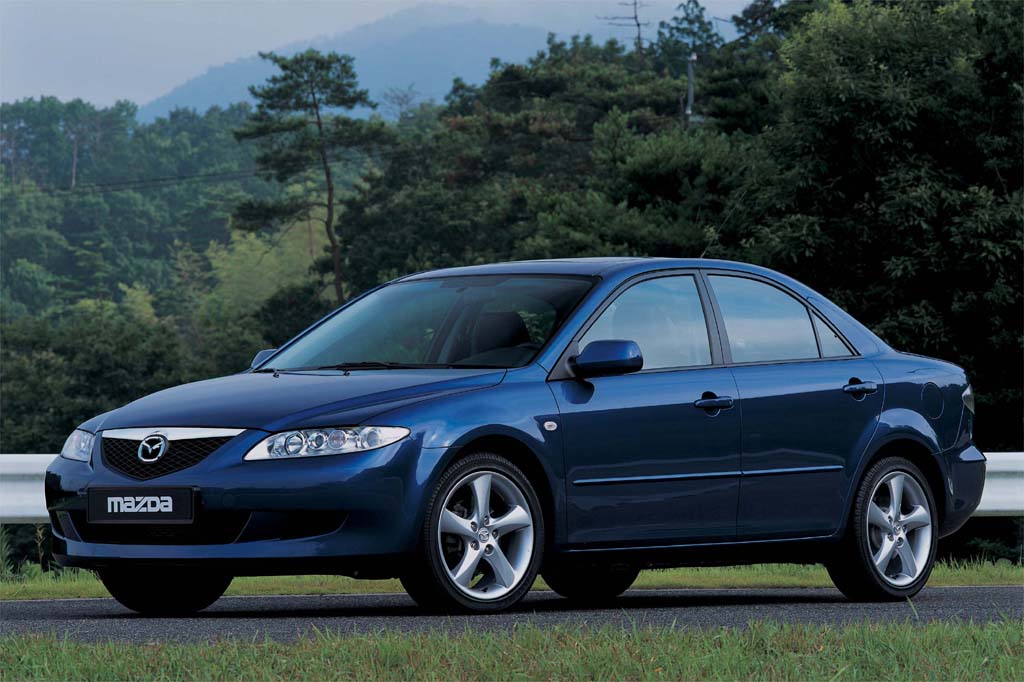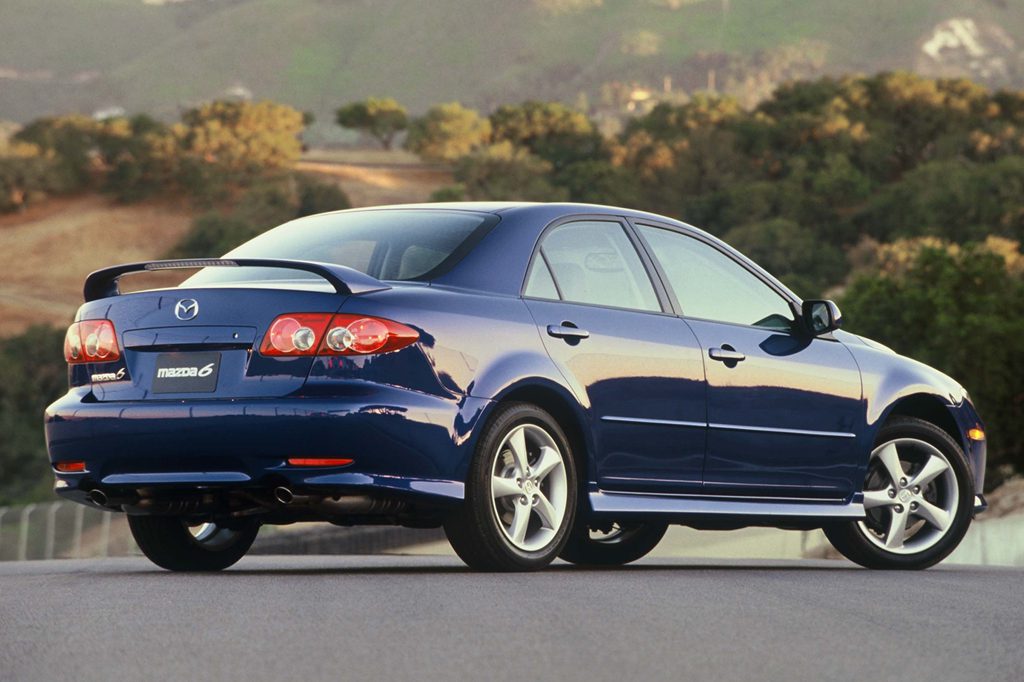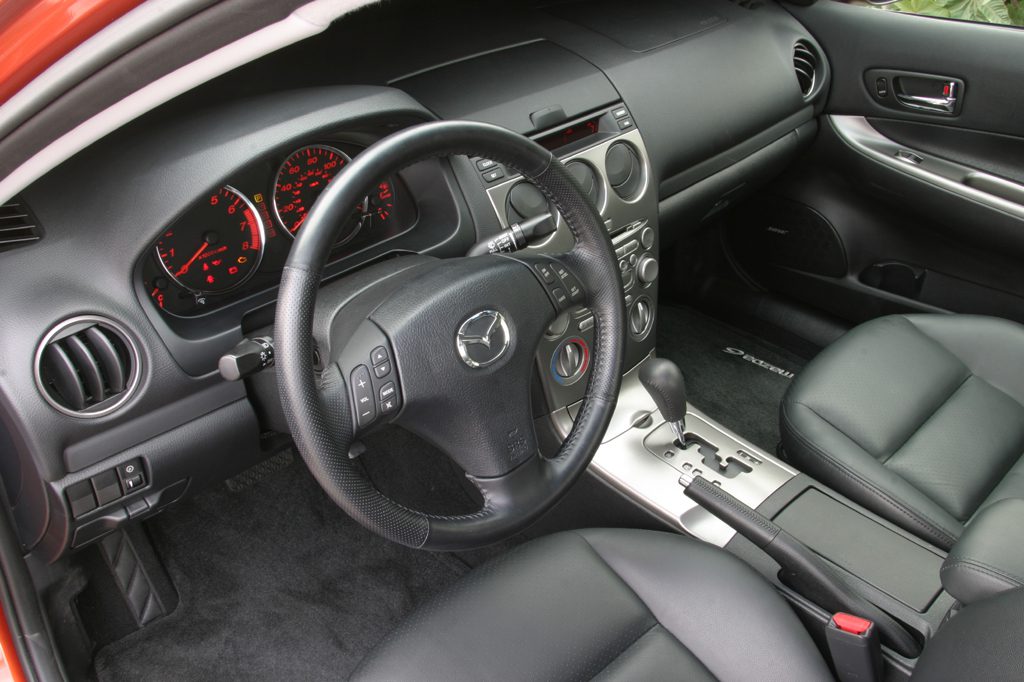| Midsize car; Built in USA |
|
|
| Good condition price range: $4,500 – $14,000* |

2003 Mazda 6

2004 Mazda

2005 Mazda 6

Mazda 6 interior
| Pros: |
|
| Cons: |
|
In total refinement, the Mazda 6 ranks a shade behind the pace set by Accord and Camry. Acceleration is tepid in four-cylinder models with automatic; yet overall, the Mazda 6 delivers on its fun-to-drive promise. It’s also as practical as any compact sedan–and even some midsize models. As a result, the Mazda 6 earns a Recommended rating.
Overview
Replacing the 626 sedan, the new front-drive Mazda 6 (actually badged “Mazda6”) was a slightly wider, taller, and heavier sedan with fresh styling and more power. The base “i” model used a new 160-horsepower, 2.3-liter four-cylinder engine. The uplevel “s” sedan held a 220-horsepower, 3.0-liter V6, versus the 165-hp 2.5-liter V6 in the departed 626.
Both engines teamed with a manual or automatic transmission. The automatic was a four-speed unit on four-cylinder models, but a five-speed with V6s; both had a separate gate for manual shifting.
All models had four-wheel disc brakes. ABS with integrated traction control was standard on V6 models, and optional for four-cylinder sedans. Front side airbags and curtain side airbags were available for all models. So was a Sport Package that included 17-inch alloy wheels instead of steel or 16-inch alloys, plus a rear spoiler and other aero body add-ons.
Standard equipment included a single-disc CD player, tilt/telescopic steering wheel, and a split-folding rear seatback. V6s added automatic climate control. Options included a sunroof, leather upholstery, heated front seats, in-dash CD changer, and Bose audio. V6s came with a power driver’s seat.
The Mazda 6 competed against both compact and midsize cars, in power as well as marketing focus. Rivals included the Ford Taurus, Honda Accord, Nissan Altima, and Toyota Camry; and later, the redesigned Chevrolet Malibu.
Yearly Updates
| 2004 6 Wagon and hatchback body styles joined the original Mazda 6 sedan in the spring of 2004. Seventeen-inch wheels were standard on “s” models, and optional for “i” versions. The available Sport Package included special interior trim. |
| 2005 6 Antilock braking and traction control were standard on all 2005 models, and a six-speed automatic transmission replaced the five-speed unit for “s” versions. Mazda’s three body styles came in base, Sport, and Grand Touring trim levels. |
| 2006 6 An available 6-speed automatic transmission and a new MazdaSpeed performance model highlighted Mazda’s 2006 midsize car lineup. MazdaSpeeds were sedans with all-wheel drive and a 274-hp turbocharged 4-cyl. MazdaSpeeds came only with a 6-speed manual and included a sport suspension and specific trim. |
| 2007 6 Curtain side airbags were standard for 2007 on all versions of Mazda’s midsize cars. |
| 2008 6 The 2008 Mazda 6 was little changed, but the wagon and MazdaSpeed models were discontinued this year. |
